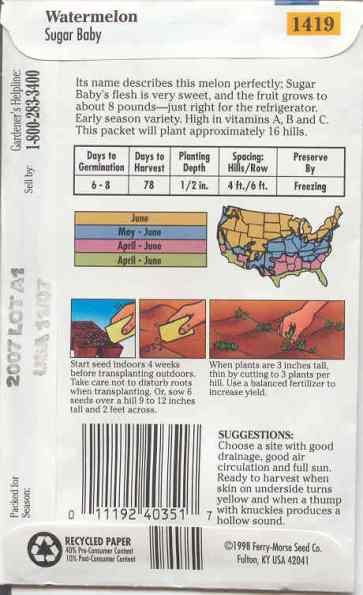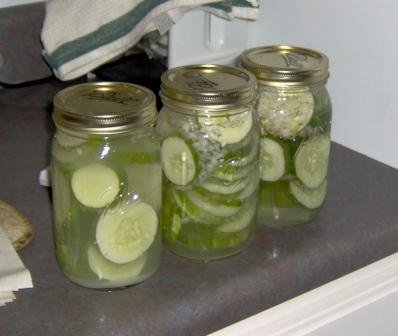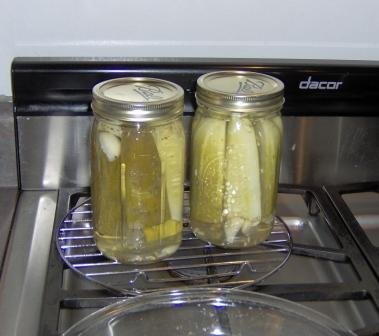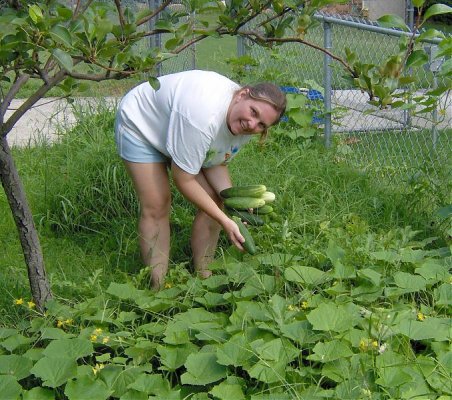My seven-year old, Daniel, would like to have some fresh watermelon, and requested we plant some seeds in the backyard.
Today, I returned home with a pack of seeds, and am a little confused by the directions. You can click on the image below for all the directions, but the part I am hoping someone can help me with is:

What does this mean? I need mounds in the yard?
Thanks for any advice for growing Sugar Baby Watermelon.
Tom
Today, I returned home with a pack of seeds, and am a little confused by the directions. You can click on the image below for all the directions, but the part I am hoping someone can help me with is:
Seed packet said:...or sow 6 seeds over a hill 9 to 12 inches tall and 2 feet across.

What does this mean? I need mounds in the yard?
Thanks for any advice for growing Sugar Baby Watermelon.
Tom



 ".
". Maybe I'll make a batch of Aunt Bea's Kerosene Pickles out of the cucumbers we can't eat.
Maybe I'll make a batch of Aunt Bea's Kerosene Pickles out of the cucumbers we can't eat. 



